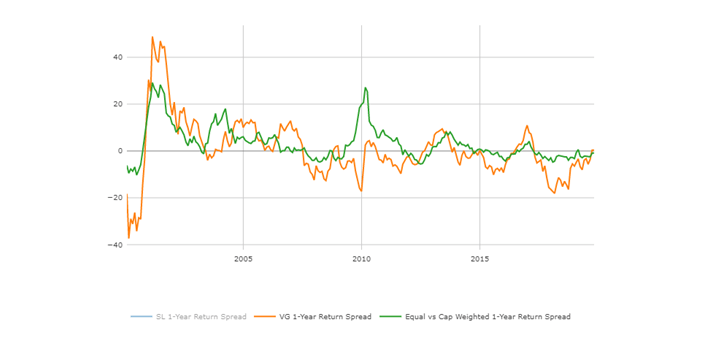Market Overview
Comments from the Fed and progress on trade talks with China give markets a boost as we begin the final month of the year. We believe fundamentals drive long-term returns. Since fundamentals remain supportive, in our opinion, we remain positive and focused on achieving long-term objectives for our clients.
US Economics
US consumer pushed GDP growth by 4.2% and 3.5% in the second and third quarters. More aggressive spending was predicated on healthier personal balance sheet, rising incomes, and a stronger asset base. This pattern has continued to a degree in the fourth quarter, with a solid recovery in retail sales in October, which augurs well for the holiday season. On the other hand, higher headline inflation, a productivity pickup, and US tax cuts—are unlikely to continue to follow wage inflation higher. This macro development is set to deliver more central bank tightening in 2019. The question remains how far the Fed would be willing to go.
Higher tariffs and rising mortgage rates are already exacting a toll on certain sectors. Moreover, while the labor market is very tight now, there is softness in price indicators. In particular, the drop-in oil prices has been dramatic. Jeremy Siegel, Professor of Economics at Wharton, points out that the breakeven inflation rates implied in the TIPS market, which the Fed looks at very closely, also dropped below 2% for the first time in over a year. If inflation is not pressing, in our view, the Fed will take a much more cautious stance in 2019 should it see the economy slowing down either because of internal or external developments. So far, the consensus (US Blue Chip Forecast) for US GDP is 2.9% and 2.6% growth in 2018 and 2019 respectively.
Global Economy
Per JP Morgan, 2019 global economic outlook healthy macroeconomic fundamentals, still-accommodative monetary policy, and building fiscal supports should allow global GDP to grow 2.9% for an expansion that will reach its 10th birthday in mid-2019. Tight labor markets are the major concern for the future of expansion. Central banks’ mandate is to keep inflation at bay and employment from getting too tight by moving toward restrictive stances. Usually, rising interest rates and corporate profit margin compression are associated with recession. Neither interest rate nor margin pressures are currently evident. Indeed, global real policy rates remain in negative territory and have moved up only a cumulative 38bp in the past year, while US and Developed Markets corporate profit margins have moved higher. However, cross-border political conflicts are raising specific regional risks for Europe and China while also threatening the global capex outlook through their depressing impact on business sentiment. Nevertheless, JPMorgan doesn’t not see the risk of recession next year as unusually high. They see the US moderating, the Euro area and Japan lifting, and China stabilizing.
Signet Equity Portfolios Rebalancing
Investment Regime
Judging by the 20-year history of Valuation Spreads (the difference between expensive vs. cheap valuations, see the graph below) we can see that currently “expensive” stocks are much more expensive than “cheap” stocks over the period. The only two times when expensive was even more expensive were at the IT bubble burst of 2000 and around March 2009 – the end of the great recession. Both extreme events were followed by a Value rally. We don’t see extreme conditions in the economy yet. Blue Chip survey (aggregate opinion of 52 most prominent world financial institutions) shows all the participants pointing to the economy growing in 2019. (This summer we validated Blue Chip Forecast with a group of Wharton PhD students). For now, we are Value/Growth neutral, but we keep an eye on the spread. The Large Cap keep dominating for the second year in a row, but our three-year average shows more of a neutral stance, so we keep our light tilt towards mid cap.
Sectors
From our robust macro analysis, we see a barbell forecast: defensive sectors – Staples, Healthcare, and Utilities – seem poised to outperform over the next 12 months. However, we are also optimistic for Consumer Discretionary and Information Technology (especially Software) and these are cyclical sectors. Since Communication Services – a new sector was formed by merging pieces of some major IT, Consumer Discretionary and old Telecom, we rate it as market neutral for the time being. We have rebalanced our portfolios accordingly.
Portfolio Composition
Sector, size, and style posturing defines a large portion of a stock portfolio return. When we adjust portfolios, we start by looking at how much Value or Growth, Large Cap, Mid or Small Cap we need to add or reduce. We measure whether we are overweighed in proper economic sectors and industries. After we define our top down targets, we assess individual positions and their fundamental characteristics. All encompassing, valuation, growth, profitability, safety and momentum/technical characteristics of stocks are also extremely important to the future returns. When we select stocks for portfolios, they have to be decent in most of those categories in comparison to their peers.
In our portfolios, we strive to have a nice combination of stocks with cheaper valuation than our universe average. We also favor future earnings growth trading with a deep discount (based on Price to Earnings to Growth – PEG ratio). At the same time, the projected earnings and sales growth rates over the next 3-5 years should be superior as well (in Strategic All Equity Portfolio). We also seek attractive profitability and safety characteristics. We are very encouraged that the stocks in our portfolios overall have higher 3-5-year projected appreciation potential versus universe averages. (data source: Compustat, Zack’s, Value Line). A combination of fundamental factors usually works much better than a single factor over long-term, since they support each other as a group. All we can do as long-term investors is position ourselves to take advantage of long-term fundamentals and patiently wait for the market to resume paying attention to those.
Valuation Spreads (Source: Signet FM, Compustat):




























































































